Mouse Identification & Control
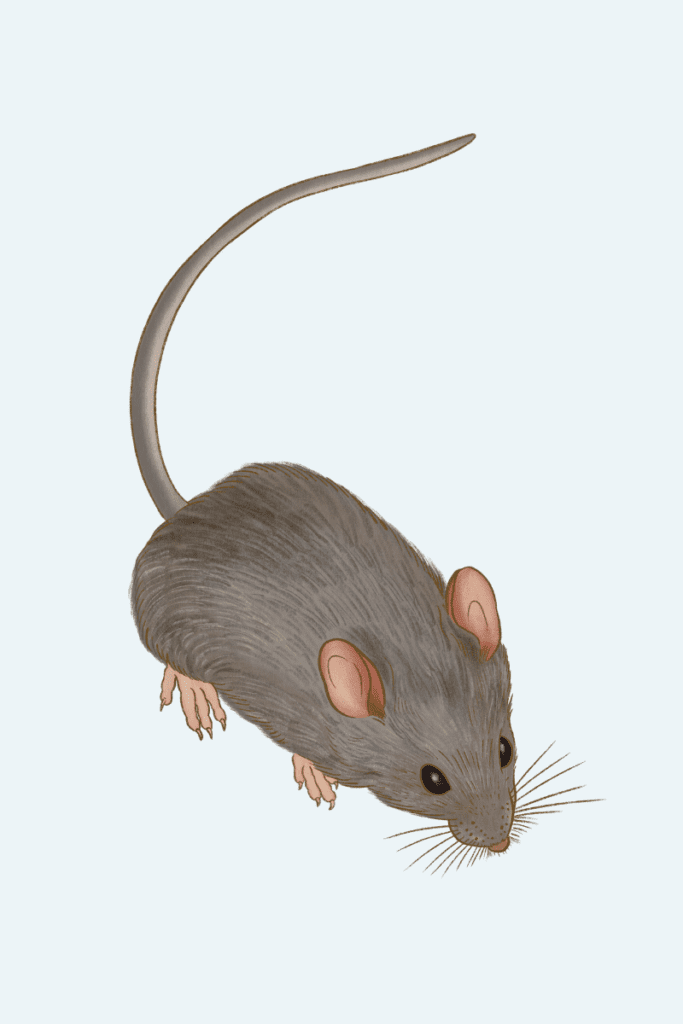
About Mice
House mice are one of the most pervasive household pests in the world. Their small size and flexible body structure allows them to enter homes and buildings through even the tiniest of openings in search of food and shelter.
Infestations are especially common in urban environments like New York City due to the abundance of food sources and high housing density, which makes it easy for them to traverse neighboring apartments and buildings.
Appearance
These small rodents have round bodies with a pointed snout, chisel-shaped incisors, beady eyes, and pink ears. They have thin, hairless tails that are almost as long as their bodies and covered in circular rows of scales called annulations.
Signs of a mouse infestation include droppings, scratching noises, musky odors, gnaw marks, and runways (dirty, greasy smudges from their fur rubbing against floors and baseboards).
Behavior
Mice are voracious eaters that consume around 3 grams of food per day (about 10–15% of their body weight).
Activity usually peaks between dawn and dusk, as mice are nocturnal creatures that actively avoid humans. During the day, they nest in warm, dark areas like basements, attics, and wall voids.
When you hear scratching noises coming from inside walls or ceilings, it’s because mice constantly gnaw on hard surfaces to keep their teeth from growing too long. During inspections, we often find gnaw marks on furniture and walls where mice are active.
Risks
Once inside, mice can cause both major and minor problems, ranging from droppings and noise disturbances to property damage and food contamination. They also carry many diseases, such as salmonella, hantavirus, and lymphocytic choriomeningitis (LCM).
In extreme cases, mice chewing on electrical wiring or gas lines can even lead to house fires. It’s estimated that mice and rats are responsible for 20–25% of fires of unknown causes.
Identification
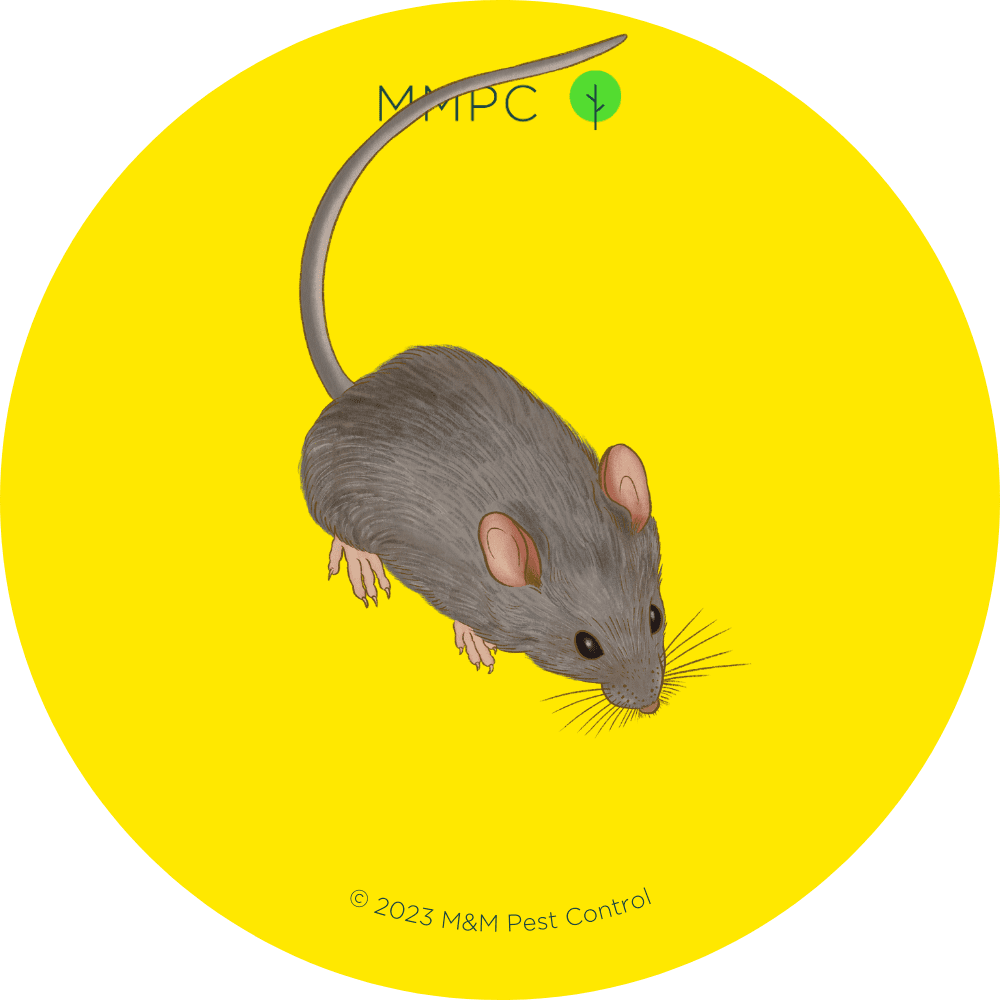
House Mouse
House mice (Mus musculus) are commonly found in interior environments and can live for up to 18 months. Female house mice can produce 36 to 192 offspring per year.
Although they’ll eat just about anything, they especially love grains, fruits, seeds, and pet food that’s been left out overnight. Indoors, they can cause all sorts of trouble, such as gnawing on walls and furniture, chewing electrical wires, and contaminating food.
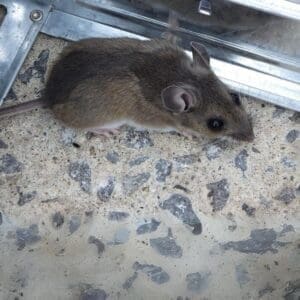
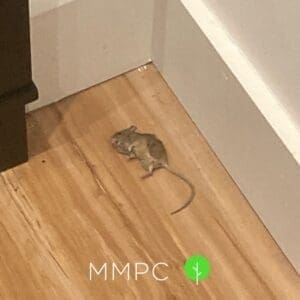

Size: 2.5″ – 3.75″ (6 – 10 cm) from nose to base of tail
Color: Dusty gray to brown
Identifying Features:
- Short, grayish-brown fur
- Rounded ears
- Beady eyes
- Long, chisel-shaped front teeth (incisors) with a distinctive notch
- A thin, nearly hairless tail with scale rings
Control

How to Get Rid of Mice
In some cases, you can use DIY methods to get rid of an individual mouse that has found its way into your home. In other cases, you may need to enlist the help of a professional exterminator.
To prevent a mouse infestation from worsening, it’s important to take appropriate action as soon as you discover signs of their presence.
Cleaning and Sanitation
Keeping your house clean eliminates scent trails and reduces their access to food and water, which discourages their presence.
- Reduce clutter.
- Regularly clean and vacuum floors.
- Remove crumbs, grease, and food residue from surfaces, particularly in kitchen and dining areas.
- Take out kitchen trash before going to bed.
- Don’t leave dirty dishes and pet food out overnight.
- Store food in clear, resealable containers.
Exclusion (Sealing)
In addition to their small size, mice have collapsible skeletons that allow them to squeeze through tiny cracks and holes about the size of a dime. Exclusion involves finding and sealing these potential entry points to stop mice from entering and traveling around your property.
For best results, we recommend using sturdy materials that mice are unable to chew through, including steel wool, aluminum mesh, sheet metal, or cement.
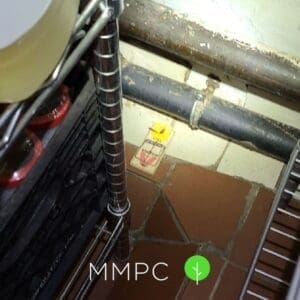
Traps
Commercially-available mouse traps can be effective for catching individual mice, but they won’t stop an infestation. When setting up traps, proper placement is key. Place traps in areas where mice frequently pass by, such as along walls, behind appliances, and underneath furniture.
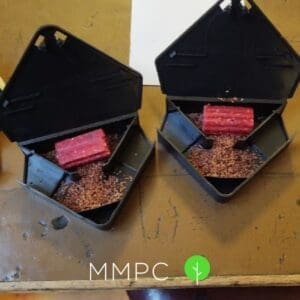
Bait Stations
Poison bait stations are better for managing moderate to severe infestations. These small plastic boxes contain rodenticide mixed with grains or other attractants. Mice enter through a small hole, eat the bait, then return to their nests where they die after a few days.
Similar to traps, you want to place them in areas where mice are active and not out in the open. Remember to always read and follow manufacturer guidelines when using poison baits.
FAQs
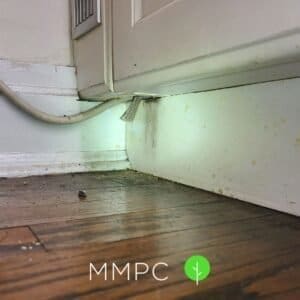
What Are Common Signs of Mice?
Finding evidence that a mouse has entered your home is the first step in getting rid of it. If you suspect mouse activity in your home, look for these signs:
- Droppings
- Holes
- Rub Marks
- Gnaw Marks
- Nests
- Noises
- Odors
- Unusual Pet Behaviors
Read More: Signs of Mice
Our Services
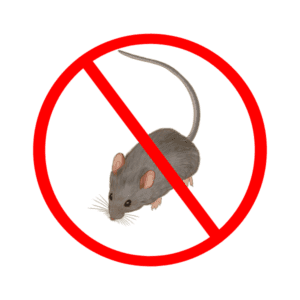

Need help getting rid of mice? Talk to our experts today about mouse extermination and exclusion services.
We are available seven days a week to address your pest control needs.


